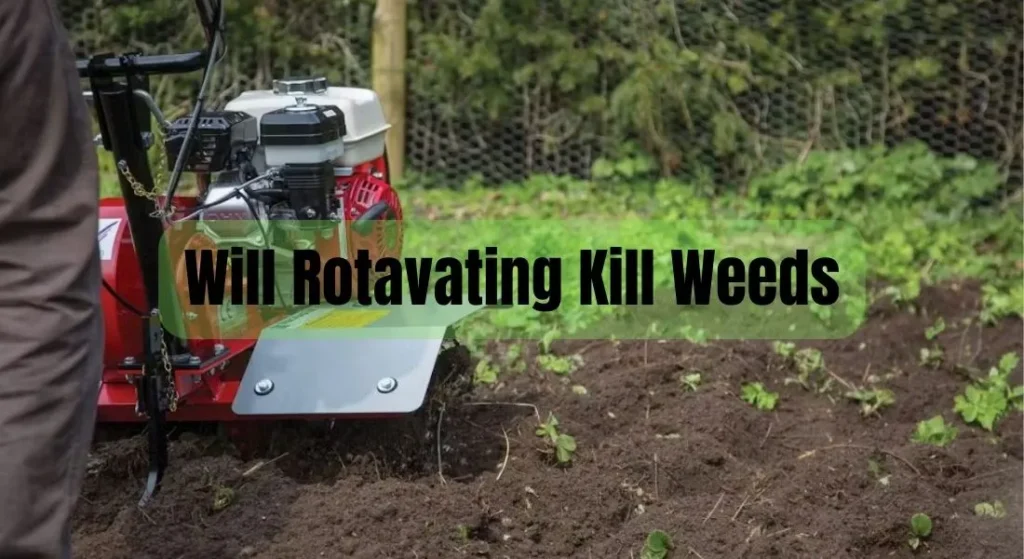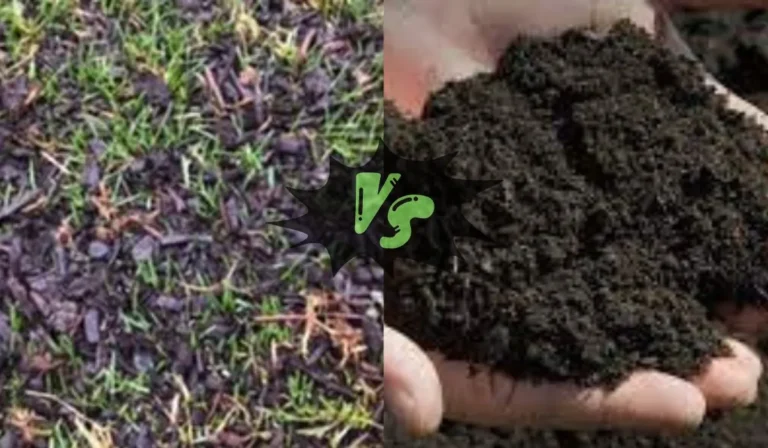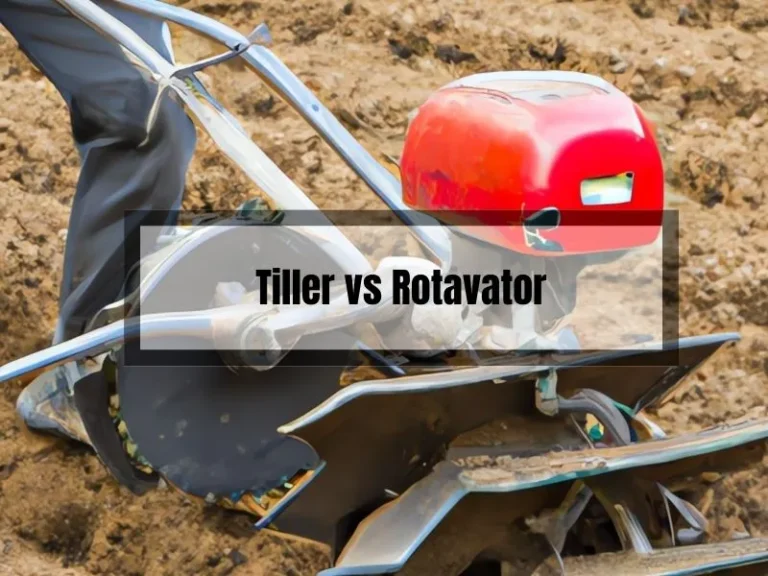Will Rotavating Kill Weeds? The Truth About This Popular Gardening Technique
Are you tired of constantly battling with weeds in your garden? Do you want to know if there is a more effective way to get rid of them? Well, you’re in luck. In this article, we will introduce you to the concept of rotavating for weed control.
You may be wondering what rotavating is and how it works. We will provide you with all the information you need to know about this method, including its effectiveness on different types of weeds, factors to consider when using it, and alternative methods for weed control. So, keep reading to learn more about rotavating and how it can help you achieve a weed-free garden.
Key Takeaways
- Rotavating can be an effective way to control weeds in your garden.
- It is important to consider factors such as soil type and weed type before using this method.
- Alternative methods for weed control include hand weeding and using herbicides.

Will Rotavating Kill Weeds?
Rotavating, also known as tilling or turning over soil, may seem like a quick solution to get rid of weeds. However, while it can chop up weeds and bury them, it may not completely eliminate them. In fact, rotavating can even spread weed seeds and roots throughout the soil, leading to further weed growth.
Before using rotavating for weed control, consider factors such as the type of weeds present, the depth of their roots, and the soil conditions. It may be more effective to manually remove weeds or use weedkillers instead.
Overall, rotavating can be a useful tool for preparing soil for planting, but it may not be the best option for weed control.
Related Posts:
How Does Rotavating Affect Weeds?
Rotavating can effectively get rid of annual weeds by chopping them into small pieces and leaving them to decompose in the soil. However, perennial weeds like dandelions can be more challenging to eliminate.
Rotavating can spread their root systems, making the problem worse. It’s best to remove perennial weeds manually before rotavating to prevent their spread.
Related Posts:
Factors to Consider When Rotavating
Before you start rotavating, there are some factors to consider. First, make sure the soil is moist enough to prevent clods of soil from being left behind by the rotavator. Second, consider the drainage of the soil to avoid soil compaction.
Third, if the ground is uneven, you may need to make several passes with the rotavator to ensure that the soil is evenly tilled. Fourth, consider the presence of rocks, which can damage the blades of the rotavator and make it difficult to till the soil.
Finally, consider the use of mulch or compost to prevent weeds from growing by blocking out the light they need to germinate.
To summarize, when rotavating, you need to ensure that the soil is moist enough, the drainage is good, the ground is level, there are no rocks, and you use mulch or compost to prevent weed growth.
Related Posts:
Alternative Methods to Rotavating for Weed Control
If you’re looking for alternative ways to control weeds without rotavating, there are a few options to consider. Organic methods can be just as effective as chemical ones, and they’re better for the environment.
Organic Weed Control Methods
Mulching is a great way to smother weeds. You can use materials like straw, wood chips, or even cardboard to cover the soil. Hand pulling is also an option. It may require more effort, but it’s a satisfying way to get rid of weeds.
Cover crops are another option to consider. They can outcompete weeds and add beauty to your garden.
Chemical Weed Control Methods
If you prefer to use chemicals, herbicides are an option. However, be careful as they can be heavy-handed and affect more than just the weeds. There are pre-emergent and post-emergent herbicides available.
Related Posts:
How Do You Control Weeds in a Garden?
Weeds can be a nuisance in any garden, but there are several ways to control them. Here are some effective methods:
- Mulch: Mulching is a great way to control weeds. You can use organic materials such as leaves, straw, or grass clippings to cover the soil. This helps to block out sunlight and prevent weed seeds from germinating.
- Hand weeding: Hand weeding is a good option for small gardens or for removing individual weeds. Make sure to pull the entire weed, including the roots, to prevent it from regrowing.
- Herbicides: Herbicides can be used to kill weeds, but they should be used with caution as they can also harm desirable plants. Always follow the instructions carefully and use appropriate safety gear when applying herbicides.
- Planting strategies: Planting ground covers or densely planted crops can help to shade out weeds and prevent them from growing.
By using these methods, you can keep your garden free of weeds and ensure that your plants are healthy and thriving.
Related Posts:
What Safety Tips Should You Follow When Rotavating?
When rotavating, safety should always be a top priority to prevent accidents and injuries. Here are some tips to keep in mind:
- Wear appropriate safety gear such as sturdy boots, gloves, and eye protection to protect yourself from flying debris and potential injuries.
- Keep children and animals away from the area when you are using a rotavator as they can be dangerous.
- Check the area for obstacles like rocks, tree roots, or buried wires before using a rotavator. These can damage the rotavator or cause it to kick back, potentially causing injury.
- Read the instructions carefully and use the rotavator correctly. Keep your feet away from the rear of the machine, and move along the plot in strips, overlapping them slightly to make sure you don’t miss any spots.
- Maintain your rotavator properly by checking for loose bolts, worn blades, and other signs of wear and tear. This will help to prevent accidents and prolong the life of your machine.
By following these safety tips, you can ensure a safe and successful rotavating experience.
Related Posts:
FAQs
Here are some frequently asked questions about rotavating:
- What is the best time to rotavate? The best time to rotavate is during the spring or autumn months when the soil is moist but not too wet. Avoid rotavating during rainy weather as it can lead to soil compaction and potential damage to the soil structure.
- Can you rotavate a lawn? Yes, you can rotavate a lawn, but it is not recommended unless you are planning to completely redo your lawn. Rotavating a lawn can damage the existing grass and soil structure, leading to uneven growth and potential weed problems. It is best to remove the existing grass and weeds before rotavating and then lay down new topsoil and grass seed.
- Will rotavating kill grass? Rotavating can kill grass and other weeds by uprooting them and exposing their roots to air and sunlight. However, some weeds have deep roots and can regrow even after rotavating. Additionally, rotavating can spread weed seeds throughout the soil, leading to potential weed problems in the future. When rotavating to kill weeds, it is important to remove any large weeds or debris before starting.
Remember to always take precautions when rotavating to avoid damaging your soil and lawn. Remove any large weeds or debris before starting and avoid rotavating during rainy weather.
Related Posts:
Conclusion
In conclusion, rotavating can be a useful tool in controlling weeds in your garden. However, it is important to remember that it should not be the only method of weed control. Rotavating can help to bury weed seeds and improve soil health, but it may also spread perennial weeds like couch grass or bindweed. To maximize its effectiveness, it is important to remove any existing weeds before rotavating and to follow up with other weed control methods like hand weeding or mulching.
When using a rotavator, it is crucial to follow safety guidelines, wear protective gear, and be mindful of any underground utilities or obstacles. Weed control is a continuous process and requires a combination of methods to be effective. Incorporating rotavating into your weed control strategy and following up with other methods can help keep your garden healthy and weed-free.
In personal experience, rotavating has been a helpful tool in preparing new beds for planting or incorporating amendments into the soil. However, caution should be exercised when using a rotavator and following up with other weed control methods is important to ensure that weeds do not take over.
Related Posts:





